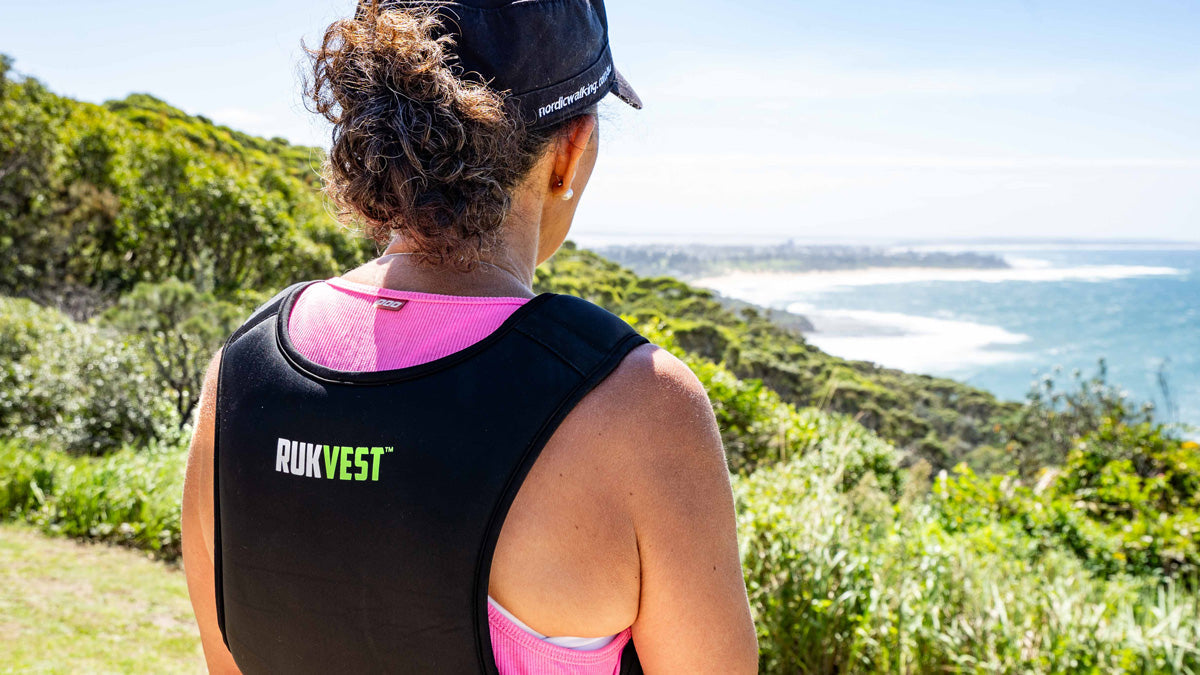In our modern era of convenience and technology, where sedentary lifestyles dominate, our musculoskeletal health often pays a hefty price. With prolonged hours spent sitting at desks, commuting in cars, or lounging on couches, our bodies suffer from weakened muscles, tightened joints, and compromised posture. However, amidst this sedentary landscape, a simple yet effective solution emerges: rucking.
Key Takeaways
- Rucking combines walking with resistance training by adding weight to a backpack.
- Progressive overload—gradually increasing weight—builds strength, endurance, and fitness.
- It strengthens legs, core, and posture while improving cardiovascular health and calorie burn.
- Start light (2–5kg) and add weight weekly to safely increase challenge and prevent plateaus.
- Rucking is a sustainable, low-impact way to improve strength and fitness for all levels.
The Impact of Modern Lifestyle on Musculoskeletal Health
Before delving into the benefits of rucking, it's crucial to understand the toll our modern lifestyle habits take on our bodies. The prevalence of sedentary behaviour, characterised by prolonged sitting and minimal physical activity, leads to a myriad of musculoskeletal issues. Muscles, especially those supporting the spine and core, weaken over time due to lack of use. Meanwhile, joints become stiff and inflexible, often resulting in discomfort and reduced range of motion.
Posture, a cornerstone of musculoskeletal health, suffers greatly under these conditions. Poor posture not only affects physical appearance but also impacts overall health. Incorrect alignment of the spine and shoulders can lead to chronic back pain, tension headaches, and even digestive issues. Furthermore, compromised posture diminishes respiratory function and circulation, affecting overall vitality and energy levels.
The Importance of Correct Posture
Maintaining correct posture is essential for optimal health and well-being. Proper alignment ensures that the body's musculoskeletal system functions efficiently. It reduces strain on muscles and ligaments, supports balanced joint movement, and prevents undue wear and tear on the spine. Moreover, correct posture enhances organ function, facilitates easier breathing, and promotes better circulation throughout the body.
In contrast, poor posture contributes to a cascade of negative effects. Slouching or hunching forward places excessive stress on the spine, leading to degenerative changes over time. This not only causes discomfort but also increases the risk of developing conditions such as osteoarthritis and herniated discs. Furthermore, poor posture impedes the body's ability to absorb nutrients effectively and can even impact mood and cognitive function.
Introducing Rucking: A Solution for Musculoskeletal Health
Rucking, often described as walking with a loaded backpack or RUKSAK, or weighted vest such as our RUKVEST presents a holistic approach to improving posture and overall musculoskeletal function. This activity, rooted in military training, combines cardiovascular exercise with resistance training, making it a formidable tool for enhancing physical fitness and posture.

Benefits of Rucking on Posture
1. Core Strength and Stability:
Carrying weight during rucking engages core muscles, including abdominals and lower back, which are crucial for maintaining spinal alignment and posture stability.
2. Improved Spinal Alignment:
The load on the back during rucking encourages a natural upright posture, helping to counteract the slouched position often adopted during prolonged sitting.
3. Enhanced Muscle Endurance:
Regular rucking strengthens muscles throughout the body, promoting better overall muscle tone and endurance, which are essential for maintaining correct posture throughout the day.
4. Joint Mobility and Flexibility:
The rhythmic movement of walking with added weight improves joint mobility, particularly in the hips, knees, and ankles, thereby reducing stiffness and promoting better posture alignment.
5. Cardiovascular Fitness:
Rucking not only benefits musculoskeletal health but also boosts cardiovascular fitness, enhancing endurance and overall physical conditioning.
Incorporating Rucking into Your Routine
To reap the benefits of rucking, start gradually with a lightweight backpack and increase the load as your strength and endurance improve. Begin with shorter distances and gradually extend your rucking sessions over time. Focus on maintaining a brisk pace and proper posture throughout, ensuring that the weight is evenly distributed across your shoulders and back.
Tips for Maintaining Correct Posture While Rucking:
- Shoulder Alignment: Keep shoulders relaxed and pulled back, avoiding rounding forward.
- Spinal Alignment: Maintain a neutral spine, avoiding excessive arching or slouching.
- Foot Positioning: Land each step with your feet hip-width apart and avoid over-striding to prevent unnecessary strain on joints.
In conclusion, rucking stands out as a practical and effective method to counteract the negative impacts of modern sedentary lifestyles on musculoskeletal health and posture. By incorporating rucking into your routine, you not only enhance core strength, joint flexibility, and cardiovascular fitness but also promote correct posture alignment. This holistic approach not only improves physical appearance but also boosts overall health and vitality, making rucking a valuable addition to anyone seeking to reclaim and maintain optimal musculoskeletal health in our modern world.
--
Written by Dr (Osteo) Lisa Vaughan
B.App.Sci(Osteo)
Osteopath, Fitgenes DNA practitioner, wife, mother, Health and Wellbeing fanatic.








Share:
Maintain Muscle Mass … No Gym Needed
The Benefits of Rucking and Progressive Overload Training